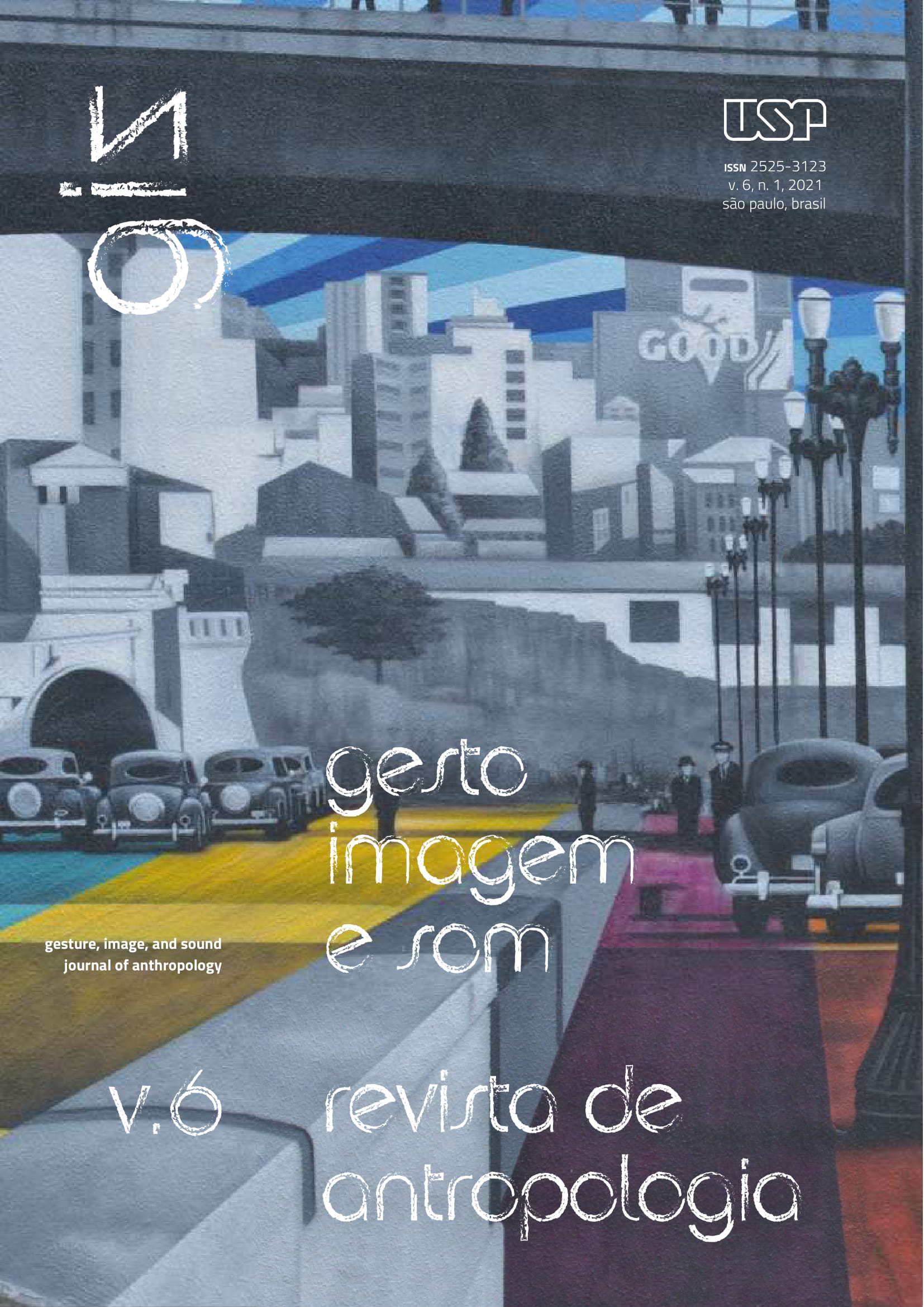The musicar do atajo de negritos da família Ballumbrosio: an ethnography of performance
DOI:
https://doi.org/10.11606/issn.2525-3123.gis.2021.175860Keywords:
Atajo de Negritos, Local musicking, Ethnomusicology, Ethnography of performance, Afro-Peruvian CultureAbstract
The atajos de negritos are groups of Afro-descendant men, boys and girls who take to the streets of El Carmen-Peru at Christmas time, usually from December 23rd to January 7th, where they perform dances and songs. They are traditional troops performing as they are formed by amateurs, residents and people with connections to El Carmen. The objective of this research is to illustrate through the performance ethnography how the music, the performance and the repertoire of the atajo are configured, and to understand how they are linked to the locality in which they occur. This investigation contributed to his field of research by talking about the ways in which contemporary blacks in Peru are turning to traditional expressive forms as a means of conquering space and redefining their local position.
Downloads
References
Chocano, Rodrigo; Antonio Rodríguez. 2013. El Hatajo para el Niño: Hatajos de Negritos y Pallitas del Distrito de El Carmen. Lima: Ministério de Cultura.
Connerton, Paul. 1989. How Societies Remember. Cambridge: Cambridge University Press.
Lucas, Glaura. 2002. Os sons do Rosário: o congado mineiro dos arturos e Jatobá. Belo Horizonte: Editoria UFMG.
Reily, Suzel. 2002. Voices of the magi: enchanted journeys in southeast Brazil. University of Chicago Press.
Reily, Suzel; Hikiji, Rose; Toni, Flávia. 2016. O Musicar Local – novas trilhas para a etnomusicologia. Projeto Temático. Fundação de Amparo à Pesquisa do Estado de São Paulo - FAPESP.
Seeger, Anthony. 1992. Ethnography of music. In: Ethnomusicology. An introduction, Helen Myers. Londres, The Mac Millan Press.
Seeger, Anthony. 2015. Porque cantam os Kisêdjê: uma antropologia musical de um povo amazônico. Cosac Naify.
Shelemay, Kay Kaufman. 2011. Musical communities: Rethinking the collective in music. Journal of the American Musicological Society, v. 64, n. 2, p. 349-390.
Small, Christopher. 1998. Musicking: the meanings of performance an listening. Wesley an University Press.
Tompkins, William David. 2011. Las tradiciones musicales de los negros de la costa del Perú. CEMDUC.
Turino, Thomas. 2008. Music as social life: The politics of participation. University of Chicago Press.
Vásquez, Rosa Elena. 1982. La práctica musical de la población negra en Perú: la danza de negritos de El Carmen. La Habana: Casa de las Américas.
Wenger, Etienne. 1998. Communities of practice: Learning, meaning, and identity. Cambridge University Press.
Downloads
Published
Issue
Section
License
Copyright (c) 2021 Ellis Regina Sanchez Hermoza

This work is licensed under a Creative Commons Attribution-NonCommercial-NoDerivatives 4.0 International License.
Authors who publish in this journal agree to the following terms:
a. All rights reserved for authors. Journal has right to first publication. Work is simultaneously licensed under Creative Commons Attribution License which permits sharing work with recognition of authorship and initial publication in this journal for non-commercial ends.
b. Authors are authorized to separately make additional contracts for non-exclusive distribution of version of work published in this journal (e. g. publish in institutional repository or as book chapter), with recognition of authorship and initial publication in this journal.







